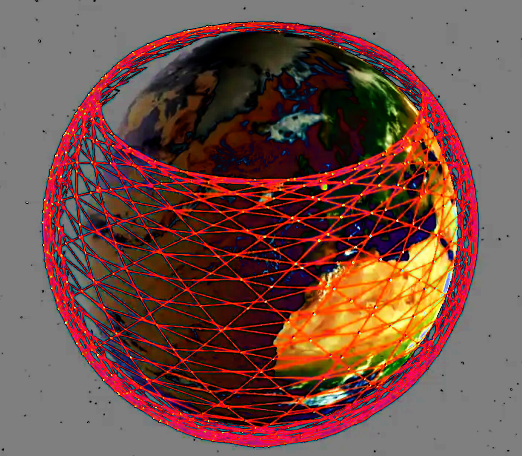Satellites smash atmosphere
 Dying satellites are burning through the ozone layer.
Dying satellites are burning through the ozone layer.
International research has revealed that old satellites burning up in Earth's atmosphere release compounds that could hinder the recovery of the ozone hole.
According to the study, the release of ozone-depleting compounds from these satellites increased eight-fold between 2016 and 2022.
It shows that with the number of low-Earth-orbit satellites rapidly rising, pollution levels could surge by 646 per cent over natural atmospheric levels.
Of the 8,100 objects currently in low Earth orbit, 6,000 are Elon Musk’s Starlink satellites.
The study shows that when internet-providing satellites burn up upon re-entry into Earth's atmosphere, they release byproducts that can catalyse chemical reactions detrimental to stratospheric ozone.
This increase in ozone-depleting compounds is significant and may threaten the positive progress made since the 1987 Montreal Protocol, which regulated harmful CFCs and aimed to shrink the ozone hole over Antarctica within fifty years.
The demand for global internet coverage has led to a substantial increase in satellite launches.
SpaceX's Starlink project is a key player, with 6,000 of its satellites already in orbit and plans to launch potentially tens of thousands more.
Other companies like Amazon are also planning constellations of thousands of satellites. These satellites typically have a lifespan of about five years, necessitating continual replacements and perpetuating the cycle of atmospheric pollution.
Aluminium oxides from burning satellites instigate reactions that deplete the ozone layer, which protects Earth from harmful UV radiation.
These oxides do not react directly with ozone molecules but trigger reactions between ozone and chlorine, leading to ozone depletion.
Aluminium oxides are persistent and can continue damaging the ozone layer for decades as they drift through the stratosphere.
The findings reveal a 29.5 per cent increase in atmospheric aluminium levels in 2022 alone.
The study suggests that by the time all planned satellite constellations are in orbit, 912 metric tons of aluminium will enter the atmosphere yearly, releasing 360 metric tons of aluminium oxides.








 Print
Print